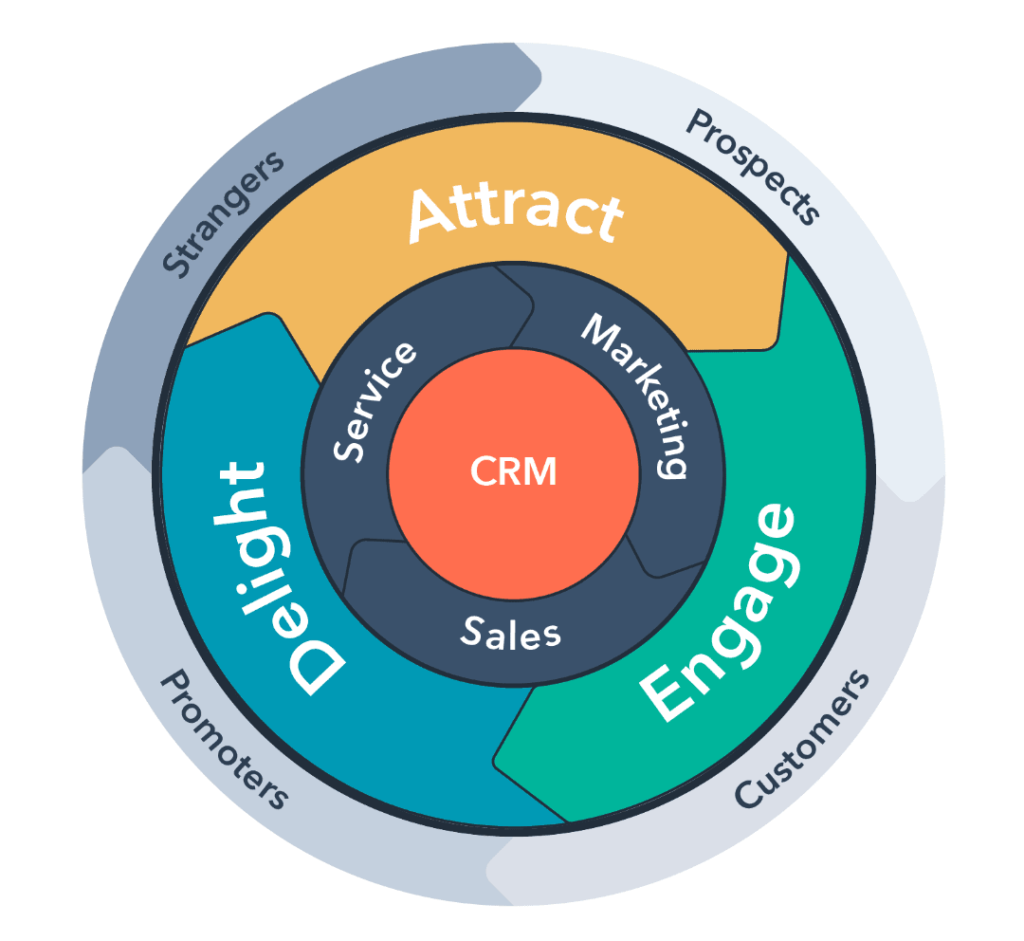Align Sales and Marketing With CRM and Marketing Automation Platforms

What if your company could achieve 24 percent faster revenue growth and 27 percent faster profit growth by tightly aligning your sales and marketing functions?

If you could achieve these results by simply reorganizing a few functions, who wouldn’t be all in? But there are even more benefits to aligning your company’s sales and marketing operations. Research by the Aberdeen Group cites the following benefits:
- Higher growth in brand awareness
- Larger average deal size
- More sales acceptance of marketing-generated leads
- Improvements in achieving team quotas and percent of sales-forecasted pipeline generated by marketing
Today, of course, sustainable improvements in your sales and marketing operations couldn’t be made without customer relationship management (CRM) and marketing automation tools. According to Salesforce, automation can help businesses increase marketing ROI and overall growth. Salesforce customers, in fact, report an average 25 percent increase in marketing ROI after adopting CRM software.
These powerful digital platforms have transformed how B2B companies go to market — digitally linking two functions with a common toolset. To capitalize on the benefits of marketing automation and CRM platforms, B2B companies are on a buying spree, with spending estimated to reach $25 billion annually by 2023, notes HubSpot.
8 Benefits of CRM and Marketing Automation Platforms
1. Generates Better Leads
When you automate many of the steps between sales and marketing you give your team more time to think strategically and to determine the best lead-nurturing tactics for converting more prospects into customers. According to Salesforce, “marketing automation can also give you a richer, more detailed picture of potential customer behavior.”
2. Builds a Total View of Your Customers
When you integrate your CRM with a marketing automation system, you’ll find that 1+1=3. You’ll be able to track what pages your prospects are viewing on your website, the forms of content they’re interested in and where they are in the buying cycle. These insights will help you polish and fine-tune your marketing tactics.
3. Manages Targeted Email Marketing
Use your marketing automation system to nurture existing leads through regular email newsletters or other touchpoints. Targeted email also helps you contact leads that have gone cold over time. You’ll have visibility into how your prospects deal with your emails: opens, click-throughs and views of your content.
4. Automates Customer Data Gathering
CRM’s give you the ability to look up company size, industry and other metrics, which saves you the hassle of using other tools such as LinkedIn or having to paste in information manually.
5. Improves Marketing and Sales Reporting
Complete visibility into your sales pipeline is important for a better understanding of what stage your deals are in. You’ll want to know which deals are nearing closing or which need some form of action. You’ll also be able to see which marketing activities are driving the most deals, and which tactics have the highest failure rates.
6. Automates Social Media Posting
Marketing automation tools give you the ability to queue up several social media posts and have them drop any time of the day or night, even weekends. These platforms give you complete insight into audience actions, such as views, reposts, favorites, shares and more. You’ll quickly learn the best time of the day to drop your campaigns to maximize prospect engagement.
7. Provides Deep Lead Intelligence
Quickly identify engaged prospects based on predetermined behaviors such as numbers of website page views, sales literature downloads, demo requests or contact form submissions for a free e-book or white paper. Once identified, you can flag the prospect for follow up with your sales team.
8. Automates Administrative Processes
All CRMs automate numerous administrative functions and tasks that once had to be performed manually:
- Schedule meetings automatically by sending meeting links.
- Customize email templates for each prospect to personalize your message and appeal to their needs exclusively.
- Organize your prospects the way you work: filter by industry, company size, or custom field.
- Set up automated campaigns with actions that you schedule. Set it once and forget it.
- The software automatically syncs all emails so you can later reference a convenient paper trail.
- Quickly find any customer’s data and complete history. Easily identify which prospects kicked a few tires in the past; spend your time on the highest value leads. All platforms calculate lead scores and identify your highest-value prospects.
Automate Your Sales and Marketing Functions With a Wide Selection of Options
It’s true that 40 percent of salespeople use paper-based methods like Excel to organize customer data. As a result, HubSpot reports that 27 percent of salespeople spend an hour or more each day on data entry.
The first step toward sales and marketing alignment begins when you get both teams using the same tool. Many of the brands are flexible, affordable and easy to implement. If you haven’t yet automated your sales and marketing functions, consider trialing HubSpot’s free CRM. At zero cost, the risk can’t get lower!
HubSpot is easy to implement on your own; or, as a HubSpot Certified agency, we’ll lend a hand if you’d like help.
Regardless of which platform you choose, start small, implementing the pieces of the software that help you the most in terms of automation and analytics (meeting scheduling and lead scoring, for instance.) You’ll soon improve lead quality, increase revenue and profitability faster, and grow your business.


